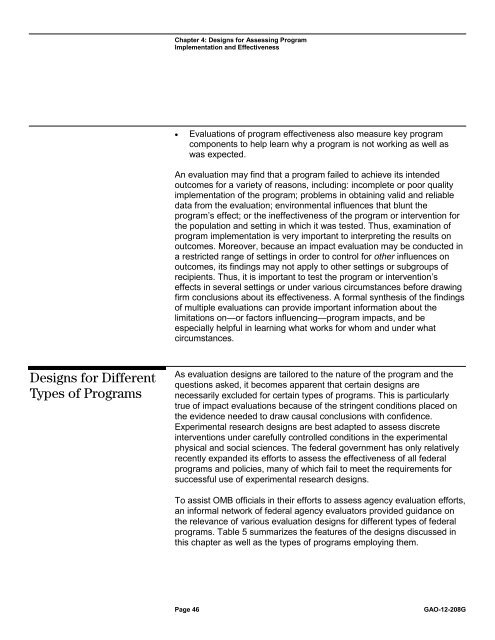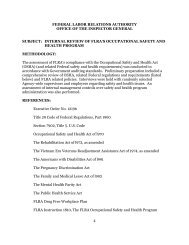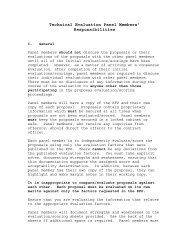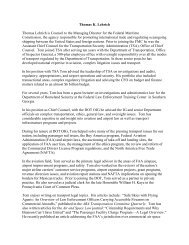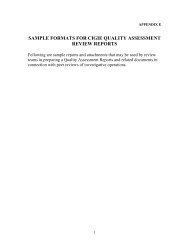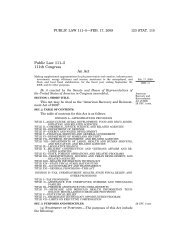GAO-12-208G, Designing Evaluations: 2012 Revision
GAO-12-208G, Designing Evaluations: 2012 Revision
GAO-12-208G, Designing Evaluations: 2012 Revision
You also want an ePaper? Increase the reach of your titles
YUMPU automatically turns print PDFs into web optimized ePapers that Google loves.
Designs for Different<br />
Types of Programs<br />
Chapter 4: Designs for Assessing Program<br />
Implementation and Effectiveness<br />
• <strong>Evaluations</strong> of program effectiveness also measure key program<br />
components to help learn why a program is not working as well as<br />
was expected.<br />
An evaluation may find that a program failed to achieve its intended<br />
outcomes for a variety of reasons, including: incomplete or poor quality<br />
implementation of the program; problems in obtaining valid and reliable<br />
data from the evaluation; environmental influences that blunt the<br />
program’s effect; or the ineffectiveness of the program or intervention for<br />
the population and setting in which it was tested. Thus, examination of<br />
program implementation is very important to interpreting the results on<br />
outcomes. Moreover, because an impact evaluation may be conducted in<br />
a restricted range of settings in order to control for other influences on<br />
outcomes, its findings may not apply to other settings or subgroups of<br />
recipients. Thus, it is important to test the program or intervention’s<br />
effects in several settings or under various circumstances before drawing<br />
firm conclusions about its effectiveness. A formal synthesis of the findings<br />
of multiple evaluations can provide important information about the<br />
limitations on—or factors influencing—program impacts, and be<br />
especially helpful in learning what works for whom and under what<br />
circumstances.<br />
As evaluation designs are tailored to the nature of the program and the<br />
questions asked, it becomes apparent that certain designs are<br />
necessarily excluded for certain types of programs. This is particularly<br />
true of impact evaluations because of the stringent conditions placed on<br />
the evidence needed to draw causal conclusions with confidence.<br />
Experimental research designs are best adapted to assess discrete<br />
interventions under carefully controlled conditions in the experimental<br />
physical and social sciences. The federal government has only relatively<br />
recently expanded its efforts to assess the effectiveness of all federal<br />
programs and policies, many of which fail to meet the requirements for<br />
successful use of experimental research designs.<br />
To assist OMB officials in their efforts to assess agency evaluation efforts,<br />
an informal network of federal agency evaluators provided guidance on<br />
the relevance of various evaluation designs for different types of federal<br />
programs. Table 5 summarizes the features of the designs discussed in<br />
this chapter as well as the types of programs employing them.<br />
Page 46 <strong>GAO</strong>-<strong>12</strong>-<strong>208G</strong>


